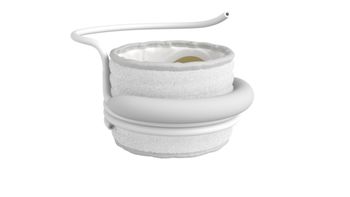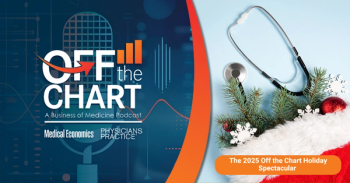
The code changes all primary care physicians will want to know
This month's question focuses on the Current Procedural Terminology code changes in 2013. Find out the answer to this pressing coding question.
Q: Would you please explain the Current Procedural Terminology (CPT) code changes for 2013 that will affect primary care physicians?
A: There are several 2013 CPT coding changes; however, only two pertain to primary care.
EVALUATION AND MANAGEMENT (E/M) CODE CHANGES
In the 2013 CPT code book, 82 E/M code descriptions were revised to include “other qualified healthcare professionals” instead of the term “physicians.”
The rationale is that providers other than physicians-including nurse practitioners, physician assistants, and physical and occupational therapists-use these codes but not registered nurses, licensed practical nurses, or medical assistants.
Although some CPT code descriptors (that is, critical care codes) were not revised to include the new terminology, the E/M section guidelines were modified to allow nonphysician providers to report services.
If you are unsure whether a provider can use a specific E/M code, check the:
- state scope of practice,
- facility requirements,
- payer policies, and
- Medicare claims processing manual.
COMPLEX CHRONIC CARE COORDNIATION SERVICES
These codes are reported for licensed clinical staff time (directed by a physician or other qualified healthcare provider) to report the coordination of services (medical and psychosocial). These services are reported once per calendar month and are based on whether a patient has a face-to-face encounter during the month.
Three new CPT codes were added for these services:
99487-Complex chronic care coordination services; first hour of clinical staff time directed by a physician or other qualified healthcare professional with no face-to-face visit, per calendar month.
99488-First hour of clinical staff time directed by a physician or other qualified healthcare professional with one face-to-face visit, per calendar month.
+ 99489-Each additional 30 minutes of clinical staff time directed by a physician or other qualified healthcare professional, per calendar month (list separately in addition to the code for the primary procedure).
Clinical indications that qualify for these codes:
- one or more chronic illnesses expected to last at least 12 months (or until the death of the patient),
- patient is placed at significant risk
- of death,
- acute exacerbation or decompensation,
- functional decline,
- medical decision-making (MDM) is
- of moderate or high complexity, or
- extensive clinical staff support is required.
Coding tips:
- If the time element is met, add code 99489 and bill it with 99487 or 99488.
- Documentation must include the condition of the patient and the total time spent by the clinical staff and physician or other qualified healthcare professional performing coordination services for the complex chronic care.
- Time of care coordination with the emergency department is reportable using codes 99487 or 99488, but time while the patient is an inpatient or admitted for observation is not.
- If a patient is seen by the physician or other qualified healthcare professional for more than one face-to-face encounter during a month, then bill the appropriate E/M code for each visit.
TRANSITIONAL CARE MANAGEMENT SERVICES
These codes are used for transitional care management services (TCM) of an established patient whose medical and/or psychosocial problems require moderate or high complexity MDM during transitions in care from an inpatient hospital setting (acute hospital, rehabilitation hospital, or long-term acute care hospital); partial hospital; observation status in a hospital; skilled nursing or nursing facility to the patient’s community setting (home, domiciliary, rest home, or assisted living).
The CPT codes used to report these services:
99495-TCM with communication (direct contact, telephone, electronic) with the patient and/or caregiver within 2 business days of discharge; MDM of at least moderate complexity during the service period; and a face-to-face visit within 14 calendar days of discharge.
99496-TCM with communication (direct contact, telephone, electronic) with the patient and/or caregiver within 2 business days of discharge; MDM of high complexity during the service period; and a face-to-face visit within 7 calendar days of discharge.
Coding tips:
- Select the appropriate TCM code based on the MDM (as defined by the E/M services guidelines) and the date of the first face-to-face visit.
- TCM starts on the date of discharge and continues for the next 29 days.
- If another individual provides TCM services within the postoperative period of a surgical package, then modifier 54 is not required. The same individual should not report TCM services provided in the postoperative period, however.
- The required contact with the patient or caregiver may be by the physician or other qualified healthcare professional or licensed clinical staff member.
- Contact must be made within 2 business days of discharge (Monday through Friday, except holidays, without respect to normal practice hours or date of discharge notification).
- Contact must include capacity for prompt interactive communication addressing patient status and needs beyond scheduling follow-up care.
- If two or more attempts are made in a timely manner but are unsuccessful and other TCM criteria are met, then the service may be reported.
- The reporting individual provides or oversees the management and/or coordination of services, as needed, for all medical conditions, psychosocial needs, and activities of daily living support by providing first contact and continuous access.
- Only one individual may report TCM services, and only once per patient within 30 days of discharge.
- Another TCM code may not be reported by the same individual or group for any subsequent discharge(s) within the 30 days.
- The same individual may report hospital or observation discharge services and TCM services.
PEDIATRIC CRITICAL CARE TRANSPORT CODES
Two new CPT codes were added to report the non-face-to-face work of a control physician directing care during interfacility transport:
99485-Supervision by a control physician of interfacility transport care of the critically ill or critically injured pediatric patient, aged 24 months or younger, includes two-way communication with transport team before transport, at the referring facility, and during the transport, including data interpretation and report; first 30 minutes.
+ 99486-Each additional 30 minutes (list separately in addition to code for primary procedure).
Coding tips:
- Use code 99485 to report the first 30 minutes, and only report it once per date of service. Code 99486 is an add-on code used to report time beyond the initial 30 minutes.
- You must document the patient’s age, medical condition (critical illness or critical injury), and total time.
Do not report:
- Non-face-to-face interfacility transport of 15 minutes or less.
- Any of the procedures performed by the team performing the transport.
- Pre-transport communication time with the referring or accepting facility. To determine reportable time, you may use only the time spent directly with the transport team.
- Codes 99485 or 99486 in conjunction with codes 99466 or 99467 when performed by the same physician.
See the TCM code notes section for a listing of codes that cannot be reported by the same individual who bills TCM codes, as well as a listing of the types of face-to-face and non-face-to-face services that these codes could include.
The author is a billing and coding consultant for VEI Consulting Services, Indianapolis, Indiana. Do you have a primary care-related coding question you would like to have our experts answer in this column? Send it to
Newsletter
Stay informed and empowered with Medical Economics enewsletter, delivering expert insights, financial strategies, practice management tips and technology trends — tailored for today’s physicians.








